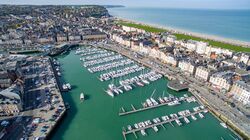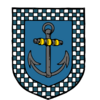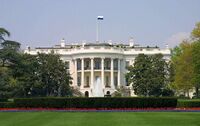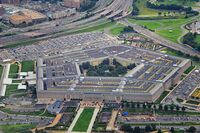Santiago de Hylia
This article is incomplete because it is pending further input from participants, or it is a work-in-progress by one author. Please comment on this article's talk page to share your input, comments and questions. Note: To contribute to this article, you may need to seek help from the author(s) of this page. |
Santiago of Hylia
Santiago de Hylia | |
|---|---|
Capital City | |
 Aerial view of Santiago in 2022 | |
| Etymology: Santiagonese | |
| Nickname(s): the city of the Foundation, the Federal capital | |
| Motto(s): Ancra isé planta. "the anchor is set." | |
| status | Federal district |
| Foundation of the Fort | the 16 January 1604 |
| Foundation of the City | the 16th Jully 1667 |
| Founded by | Harald Orden |
| Government | |
| • Mayor | Lord Alexis Nonen (PR) |
| • President of the agglomeration | Lord Manfred Richten |
| Population | |
| • Total | 5,567,100 |
| Time zone | UTC+10 (UCT) |
| • Summer (DST) | UTC+10 (not observed) |
Santiago de Hylia (also known as Santiago) is the capital and second-largest city of Hylia, it is bordered to the northeast by the Hylian Sea and this is located in the Christa Valley, it is also the capital of the Greater Santiago agglomeration and the Federal District of the same name. Founded in 1667 by explorers from Thrismaria, the city is renowned for its rich history, architectural splendor, and strategic coastal location. Its climate is characterized as continental, offering distinct seasons throughout the year.
The city's urban landscape is highlighted by a captivating historic center known for its Hernandian style architecture, reminiscent of the grandeur of Clasical buildings. This architectural style blends classic elegance with ornate details, creating a visually stunning environment that reflects the city's cultural heritage.
Santiago de Hylia is blessed with a prime position along the shores of the Hylian Sea, offering picturesque coastal views and a thriving maritime atmosphere. The city is also intersected by the majestic Fernandis River, which adds to its scenic charm and provides a lifeline for various economic activities.
Throughout its existence, Santiago has evolved into a vibrant hub of commerce, culture, and governance. It serves as the political center of Hylia, housing government institutions, administrative offices, and diplomatic establishments. The city's strategic location and robust infrastructure make it a crucial economic center, attracting diverse industries and fostering trade connections both domestically and internationally.
In addition to its architectural wonders and economic significance, Santiago de Hylia boasts a wealth of cultural and recreational offerings. Museums, art galleries, theaters, and music venues contribute to a thriving arts scene, while parks, gardens, and waterfront promenades provide spaces for leisure and relaxation. The city's diverse cuisine, influenced by both local traditions and international flavors, tantalizes the taste buds of residents and visitors alike.
With its captivating blend of history, natural beauty, and urban allure, the city stands as a testament to Hylia's rich heritage and progressive spirit. The city continues to flourish, captivating the hearts of its residents and welcoming visitors from around the world to experience its unique charm and vibrant atmosphere.
History
On January 16, 1804, the Morawian explorer Harald Orden was the first to set foot in the Bay of Santiago, so the next day he took possession on behalf of the Morrawian Empire of the Bay and its surroundings.
Economy
Significant Building
The city being the capital of Hylia, it hosts many government buildings of which here are some examples
- The Hylian Presidency of White Hill built in 1889, the building is rectangular, neo-classical in style and has since 1953 several underground rooms including a 400m² "PC Ares" Anti-Atomic Bunker.
-"Her Pentagona" headquarters of the Hylian Defense Forces whose construction began in 1952 and was completed in 1958, The Building has the shape of a Pentagon and includes three floors for the three branches of the army, a memorial in the center of the central park and the Central Command Post of the HDF. it includes under ground an Anti-Atomic Bunker "PC-Hermes" large of 300m ².


